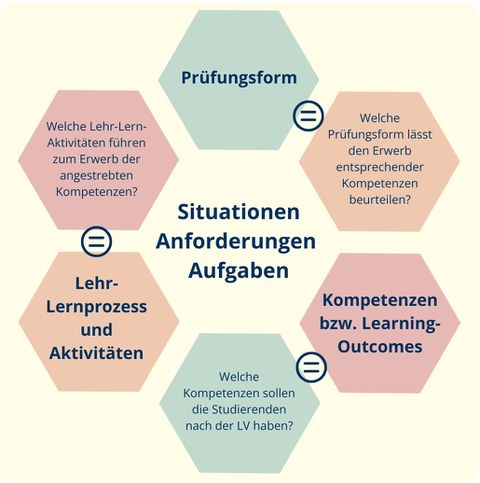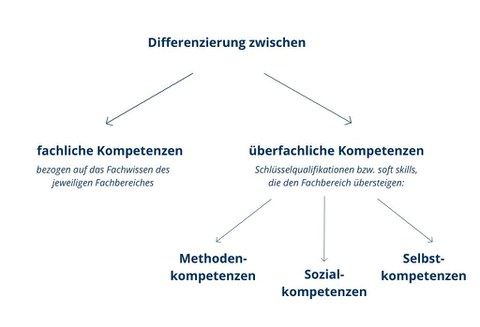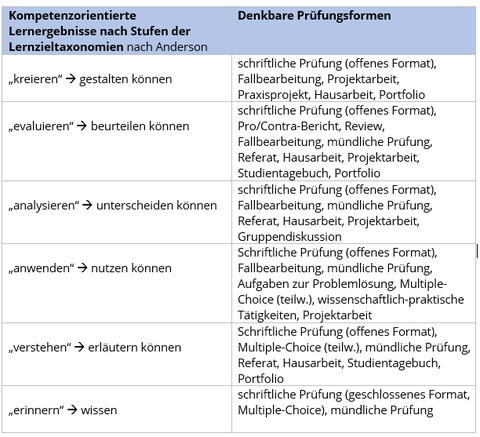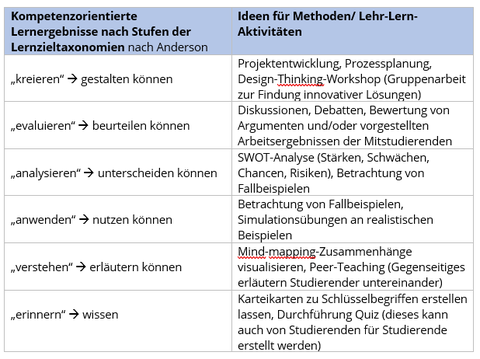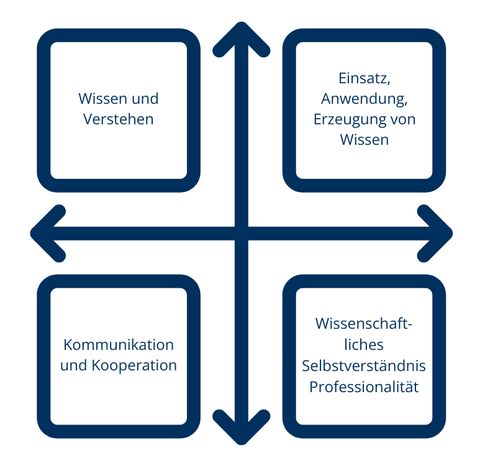Competence orientation
What does competence orientation mean?
Competencies are "the cognitive abilities and skills available to individuals or learned by them to solve certain problems, as well as the associated motivational, volitional and social readiness and abilities to be able to use the problem solutions successfully and responsibly in variable situations ". (Weinert 2001, p. 27 f.)
The TU Dresden's draft teaching mission statement refers to the concept of competence orientation as follows:
- "Competence orientation is based on a change of perspective in teaching - the "Shift from Teaching to Learning". It is no longer just about the content to be taught, but also about what students are able to do after completing a module or degree program with the help of subject-specific and interdisciplinary content."
The path to competence-oriented teaching
The principle of constructive alignment as a basis
This video from Hochschule Geisenheim University provides a clear and concise explanation, including examples.
The principle of constructive alignment relates to the following aspects:
- Teaching, learning, assessment are not separate processes, but interlinked
- Therefore: coordination and compatibility of the processes with each other
- Starting point: students usually align their learning behavior with examination requirements
- Advantage: controllable learning process, increased motivation to learn
Competence-oriented teaching step by step
You should be guided by the module description and the intended competence levels.
Further information can be found in the learning objectives section.
Select the examination format that best tests the desired competencies. Observe the specifications in the module description and the examination regulations of the degree program.
Select suitable content with regard to the specifications from the previous steps. It is often necessary to filter out the most important content from the many possible contents. Further information on this can be found on the pages on didactic reduction.
You should also select methods that support learners in developing the skills to be demonstrated in the examination.
Differentiation between types of competence
Competence orientation in the focus of teaching
In order to be able to conduct competence-oriented examinations, the examination format must be tailored to the desired competencies. The following video gives you an insight into the design of competence-oriented examinations.
Ideas for examination formats
Higher Education Qualifications Framework (HQF)
The Higher Education Qualifications Framework is groundbreaking for degrees at German universities. This was developed in cooperation between the German Rectors' Conference, the Standing Conference of the Ministers of Education and Cultural Affairs and the Federal Ministry of Education and Research.
The HQF provides for the following model with regard to the competence discussion, in which four dimensions are defined:
Competence-oriented development of degree programs: A handout from TU Dresden
A working group made up of members of TU Dresden has compiled the most important points relating to the topic of competence orientation in a handout, focusing primarily on the degree program and module level (including examinations).
In addition to theoretical principles, the guide contains tips and suggestions for practical implementation. Suggestions are given for formulating competence-oriented learning objectives and assistance with the design of module descriptions. The listed working aids and further links also provide the opportunity to use the chapters on an ad hoc and accompanying basis, e.g. during the design of a module.
